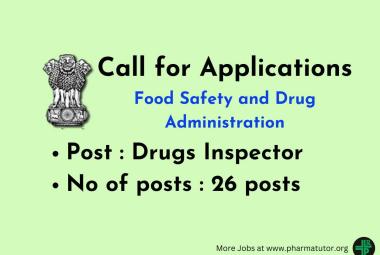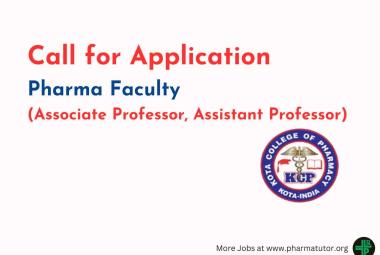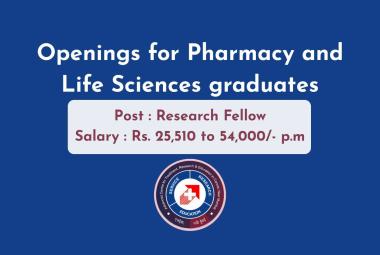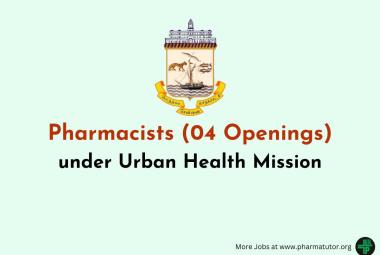About Authors:
AMRUTHA R.E.*, G.RAJESHWARI, A.SRILAKSHMI, C.RAJARAM
Department of Pharmacology
P. Rami Reddy Memorial College of Pharmacy,
Andhra Pradesh, India.
ABSTRACT
Objective - The objective of the present work was to study the antipyretic activity of rhizome Curcuma amada Linn. belonging to family Zingiberaceae, known as “Amargandha” in Sanskrit & “Mamidiallam” in Telugu Materials & Methods: The ethanolic extract was taken for the study and evaluated for antipyretic activity using Brewer’s yeast induced pyrexia in Wister strain albino rats. The ethanolic extract at a dose of 100mg/kg & 200mg/kg were evaluated for antipyretic activity. Result - The extract of Curcuma amada plant showed a significant (P < 0.01) dose dependent antipyretic effect in yeast induced elevation of body temperature in experimental rats. Conclusion - The ethanolic extract of Curcuma amada Linn. plant have significant antipyretic activity when compared with the standard drug. So. It can be recommended for further studies.
[adsense:336x280:8701650588]
REFERENCE ID: PHARMATUTOR-ART-1265
INTRODUCTION
Pyrexia or fever is caused as a secondary impact of infection, malignancy or other diseased states1. It is the body’s natural function to create an environment where infectious agents or damaged tissues cannot survive. Normally, the infected or damaged tissue initiates the enhanced formation of pro inflammatory mediators (cytokines, such as interleukin 1β, α, β, and TNF- α), which increase the synthesis of prostaglandin (PgE2) near hypothalamic area and thereby trigger the hypothalamus to elevate the body temperature.2
However, there is no scientific report available in support of the antipyretic activity of Ethanolic extract ofCurcuma amada ( EECA). The purpose of the present study was to find out the antipyretic activity of ethanolic rhizome extract of Curcuma anada.
MATERIALS AND METHODS
Collection of Plant material:
The rhizomes of plant Curcuma amada were collected from tirumala hills, Tirupathi, A.P, India and identified by assistant professor in the Department of Botany, Sri Venkateswara University, Tirupati. The plant was identified by routine pharmacognostical studies including organoleptic tests, and macroscopic and microscopic observations. The voucher specimen has been retained in our laboratory for future reference.
Preparation of plant extract:
In the present work, the authenticated fresh rhizomes of the plant, approximately (3kg) were collected and then they were cut into small pieces and immersed into ethyl alcohol. Extracts were drawn at the intervals of 24 hours till the extract was almost colourless the combined extracts were concentrated under reduced pressure when the crude extract was obtained as a yellowish, thick and fragrant liquid. TLC of the crude extract (n-hexane-ethyl acetate, 6:4) showed a streak.
The pharmacological screening of the crude extract was carried out using standard protocols. The crude extract was suspended in 0.5 % methyl cellulose (MC) for administration to albino rats.
Experimental Animals
Healthy male, female wistar rats are using for the experiment. The experimental protocol was approved by the Institutional Animal Ethical Committee of P.Rami Reddy Memorial College of Pharmacy (1423/Po/11/CPCSEA/102/2011).
Acute toxicity study
The ethanol extract of Curcuma amada was devoid of any mortality or change in behaviour up to 1 g/kg orally in albino rats. Based on this observation maximum dose of 200 mg/kg orally was used for acute treatment in following experiments.
Preparation of fever inducing agent:
In this investigation 0.5 % methyl cellulose solution was prepared in normal saline. 15 % of yeast was suspended in this prepared 0.5 % w/v methyl cellulose solution.
[adsense:468x15:2204050025]
ANTIPYRETIC STUDIES (BREWER’S YEAST INDUCED HYPERPYREXIA METHOD):
Animals of either sex were divided in to four groups containing six in each group for this experiment. The normal body temperature of each rat was measure rectally at one hour interval on a thermometer and recorded. The antipyretic activities of extract were evaluated using Brewer’s yeast induced pyrexia in Wister rats 7. Before yeast injection the basal rectal temperature of rats was recorded and after recording animals were given subcutaneous injection of 10 ml/ kg of 15 % w/v yeast suspended in 0.5 % w/v methyl cellulose solution for elevation of body temperature of rats. Rats were then returned to there housing cages. At the 18hrs after yeast injection, the vehicle, standard drug and test drugs were administered in to different groups. Propylene glycol at dose of 5 ml/kg was administered orally to the control groups of animals and Paracetamol at dose of 150mg/kg was administered orally to standard group of animals.. The ethanolic extract of Curcuma amada plant was administered orally at a dose of 100 mg/kg and 200 mg / kg of body weight to two groups of animals respectively.Rectal temperature was recorded by clinical thermometer at 0,1,2 3hrs after drug administration3.
Table no.1: Antipyretic effect of Curcuma amada plant ethanolic extract on wistar rats
|
Sr. No. |
Group |
Treatment |
Dose |
Initial Rectal Temp. in 0C before Yeast Injection |
Rectal Temperature in 0C after 18hrs of Yeast Injection (Mean± SEM) |
|||
|
0hr |
1hr |
2hrs |
3hrs |
|||||
|
1 |
I |
Control Propylene Glycol |
5ml/kg |
37.64 ± 0.1 |
40.93 ±0.11 |
40.48 ± 0.17 |
39.21 ± 0.14 |
39.13 ± 0.16 |
|
2 |
II |
Standard Paracetamol |
150mg/kg |
37.21 ± 0.2 |
40.43 ± 0.19 |
38.65 ± 0.17 |
38.46±0.09* |
37.88 ± 0.18* |
|
3 |
III |
Methanolic Extract |
100mg/kg |
37.71 ± 0.4 |
40.61 ± 0.14 |
39.63 ± 0.19 |
39.13 ± 0.24 |
38.68 ± 0.12 |
|
4 |
IV |
Methanolic Extract |
200mg/kg |
37.32 ± 0.3 |
40.58 ± 0.11 |
39.23 ± 0.12 |
38.01±0.14* |
37.93 ± 0.16* |
n = 6 in each group, “*” indicate P < 0.01 compared to control
STATISTCAL ANALYSIS :
Data was expressed as mean ±standard error of mean. . The results were analyzed statistically by ANOVA is followed by Dunnet’s test [4, 5]. The result of experiments by proper statistical analysis as stated above are tabulated in table. no.1
RESULTS
The effect of ethanolic extract of Curcuma amada rhizome on yeast induced pyrexia has been shown in table no.1. Treatment with extracts at dose of 100 mg/kg and 200 mg/kg body weight and Paracetamol at dose of 150mg/kg decreased body temperature of yeast induced rats. The results obtained from both standards and extracts treated groups were compared with the control group. A significant reduction in the yeast elevated rectal temp was observed in the test drug.
DISCUSSION
The present results showed that the ethanolic extract of Curcuma amada rhizome posseses a significant antipyretic effect in yeast induced elevation of body temperature in experimental rats .It was revealed that the extract showed dose dependent antipyretic activity. At a dose of 200mg/kg it showed significant antipyretic activity. From this normalization of body temperature was maintained sufficient periods of time. Flavonoids are known to target prostaglandins which are involved in the pyrexia6. Hence the presence of flavonoids in the ethanolic extract of Curcuma amada rhizome may be contributory to its antipyretic activity.
CONCLUSION
Although the complex biologic actions of antipyretic agents are better understood, the indications for their clinical use are less clear. They may not be indicated for all febrile conditions because some paradoxically contribute to patient discomfort, interfere with accurately assessing patients receiving antimicrobials, or predispose patients to adverse effects from other medications. The development of more selective fever-relieving agents and their prudent use with attention to possible untoward consequences are important to the future quality of clinical medicine.
Therefore the anti pyretic activity of Curcuma Amada was assessed against brewer’s yeast induced pyrexia in rats. The parameters maintained in this study were body temperature.
The ethanol extract of Curcuma Amada showed significantdecrease in body temperature. Hence, orally applicable ethanol extract of Curcuma Amada may have a great potential against the native total therapeutic agent currently available for treatment of pyrexia.
REFERENCES
1) Chattopadhyay D, Arunachalam G, Ghosh L et al. Antipyretic activity of Alstonia macrophylla Wall ex A. DC: An ethnomedicine of Andaman Islands. J Pharm Pharmaceutical Sci 8: 558-564, 2005.
2) Spacer CB, Breder CD. The neurologic basis of fever. N Engl J Med 330: 1880-1886, 1994.
3) H. G. Vogel, Drug Discovery and Evaluation Pharmacological Assays, 2nd edition, Springer, New York, 2002,716.
4) M. N. Ghosh, Fundamentals of experimental pharmacology, 2nd edition., Scientific book Agency,Calcutta, 2005,156-157.
5) S. K. Kulkarni, Hand Book of Experimental Pharmacology, 3rd revised edition, Vallabh Prakashan, New Delhi, 2006,178-180.
6) K. Rajnarayana, M. S. Reddy. M. R. Chaluvadi, Bioflavonoids classification, pharmacological,biochemical effects and therapeutical potential,Indian J. of Pharmaceutical Sciences, 2006, 68(3), 380-384.
7) R. A. Turner, Screening method in Pharmacology, Academic Press, New York & London,1965,268
NOW YOU CAN ALSO PUBLISH YOUR ARTICLE ONLINE.
SUBMIT YOUR ARTICLE/PROJECT AT articles@pharmatutor.org
Subscribe to Pharmatutor Job Alerts by Email
FIND OUT MORE ARTICLES AT OUR DATABASE









